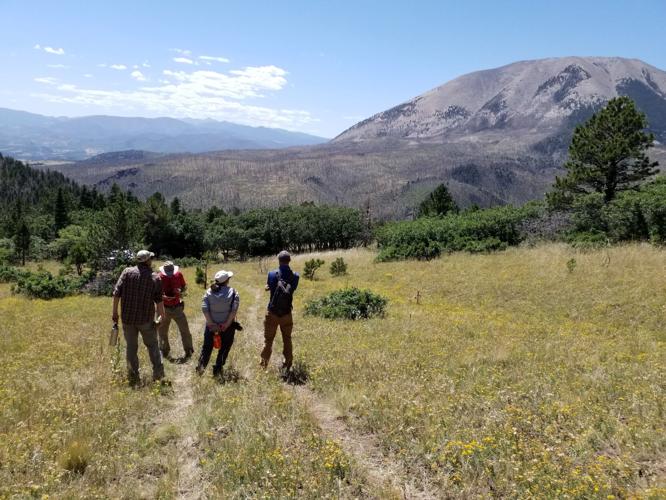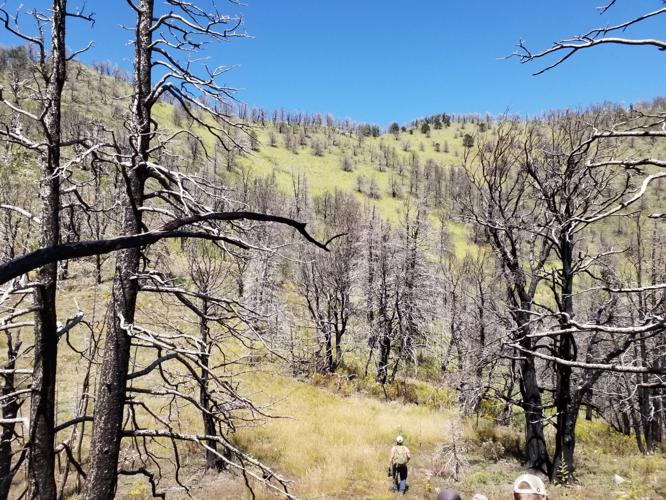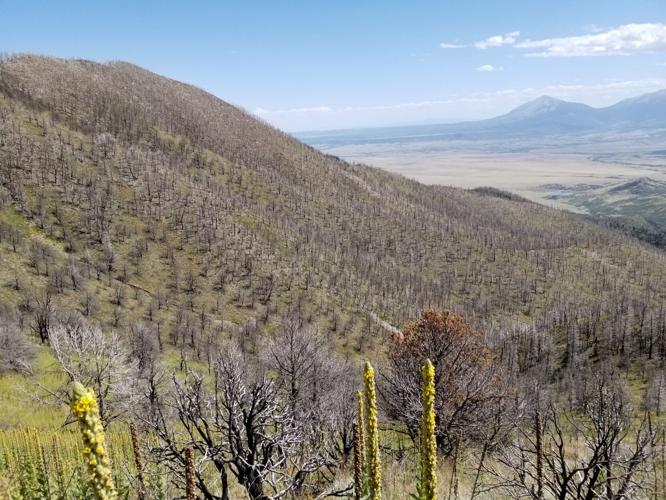Second-largest landowner in Colorado sets up long-term carbon capture
Colorado’s second-largest landowner, which owns some three million surface and four million subsurface acres, has approved an innovative long-term carbon-capture and sequestration project that restores lands damaged by forest fires.
The Colorado State Board of Land Commissioners approved a lease with Land Life Company USA PBC, marking a significant step toward reforesting wildfire-affected state trust lands.
This first-of-its-kind public-private partnership for forest carbon capture on state trust property will restore up to 1,000 acres of land severely damaged by wildfires in Grand, Huerfano, and Larimer counties, according to a news release from the State Land Board.
“This initiative represents an important component of one of our growing lines of business for the State Land Board, particularly in the voluntary carbon market,” said Nick Massie, interim director of the Colorado State Land Board. “By leveraging reforestation as an ecosystem service, we are not only restoring lands that are struggling to reforest naturally, but also ensuring they continue to generate revenue for our trust beneficiaries, primarily the public-school children of Colorado.”
Land Life has planted more than three million trees in North America, half of which have been planted on private land in Colorado burned by wildfires. Although the company has been planting trees for 10 years and started working in Colorado in 2021, this lease is its first partnership with the public sector in North America.
When Colorado became a state in 1876, Congress granted the state two sections, 16 and 36, in each township — or 1,280 acres. These grants are intended to be used to generate funds by leasing them out for agriculture, grazing, recreation, commercial real estate, rights-of-way, renewable energy, oil, gas, and solid minerals.
The funds must be spent on education, and the state holds the lands in trust for the people of Colorado. The agency is entirely self-funded and receives no tax dollars.
“We focus right now on reforestation and highly degraded landscapes. So usually that’s areas that have been impacted by wildfire. And we fund that work through the voluntary carbon market,” Clara Rowe, director of strategic partnerships for Land Life, told The Denver Gazette. “So, when we work on reforestation, we know that forests not only provide incredible benefits from a biodiversity perspective, a wildlife perspective, soil erosion prevention, the many things we know that forests do, but forests also of course sequester carbon.”
Forest fires are natural parts of the system, and natural regeneration works in many places. However, said Rowe, more fires burn hotter and severely damage the soil, delaying or potentially preventing natural regeneration.
“When we think about the expensive effort of putting in trees, that should really only happen in cases where we don’t expect natural regeneration to occur on a normal trajectory,” said Rowe “And in fact, in order for these projects to be carbon credit eligible, we have to show that that’s true. Otherwise, they shouldn’t count as an extra ton of carbon that’s been sequestered that can be used to offset a company’s emissions.”
Land Life acts as the middleman between companies that want to voluntarily invest in carbon sequestration and landowners with damaged lands that need restoration. Companies will pay for future carbon sequestration credits they can use to offset their carbon emissions, and landowners get their property restored.
Land Life does all the research and planning for each project and hires contractors to plant seedlings. It also monitors the health of the trees to certify that the amount of carbon captured meets specifications. This includes monitoring the seedlings for growth, replacing dead seedlings, and monitoring the trees’ stand until they sequester significant amounts of CO2 — about seven years after planting.
Depending on the parcel, the company plans to plant 250-400 trees per acre.
According to Land Life Regional Director for North America Brian Lawson, estimating how much carbon trees can sequester in their lifetimes is challenging due to the variation across site conditions and species. However, according to the NOAA, Lawson said that a Ponderosa Pine stand (an area/group of trees) at full maturity can sequester up to 70 metric tons of C02 over 40 years.
“Individually, we estimate a Ponderosa Pine tree can sequester up to 0.49 metric tons of C02 depending on the quality and location of the site. A rough estimate (for this project) ranges somewhere between 64,000-88,000 metric tons of C02 over 40 years,” Lawson said.
Rowe said this is a new industry, and buyers benefit from getting in on the ground floor of a sequestration project.
“They’re getting a cheaper price than they would get if they waited to buy the credit until after it was materialized,” said Rowe. “But it is a risk. And I will say one of the things about the voluntary carbon market is that it’s a new system. It’s a new system for paying for carbon to be sequestered. And it is very much still evolving.”
She said the sellers of the carbon credits would never have to pay back the money the business paid them. For the State Land Board, this is a big win. Restoring burned-over tree stands on its property not only makes money for schools but also restores ecosystems.
“Reforesting these areas is critical for future wildfire mitigation and landscape resilience, and will meaningfully contribute to Colorado’s carbon reduction goals,” said Mindy Gottsegen, Conservation Services manager of the State Land Board. “Planting native trees is a long-term investment in the health and resiliency of these lands in the face of climate change. By restoring tree cover, we can reduce soil erosion, improve water retention, and create healthier forests that are more resistant to future fires.”







